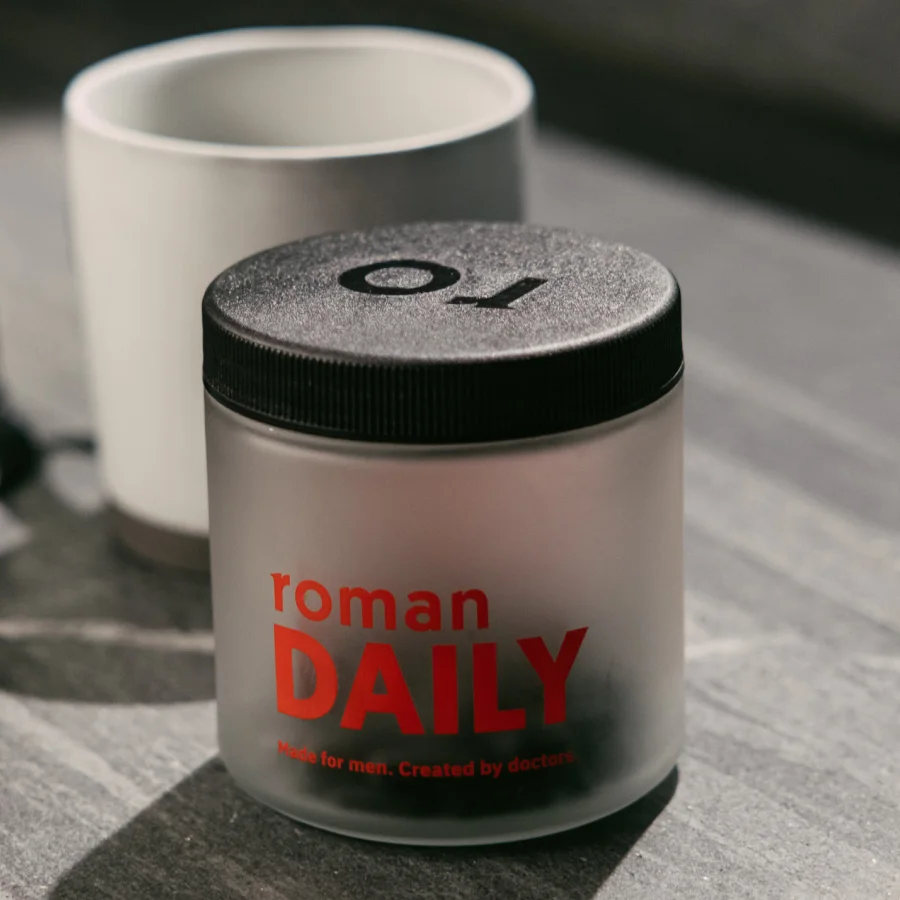What's the difference between vitamin D and D3?

Reviewed by Mike Bohl, MD, MPH, ALM,
Written by Linnea Zielinski
last updated: Oct 15, 2019
5 min read
Here's what we'll cover
There are a lot of dietary supplements out there you just don’t need. You might even have a couple in the alphabet soup that is your supplement shelf right now.
Vitamin D, however, is not one of them. If you’re an adult living in the United States, there’s a 41.6% chance that you’re not getting what the FDA considers enough vitamin D. If you’re African American or Hispanic, that chance leaps to 82.1% and 69.2%, respectively (Forrest, 2011).
You would think this is where it gets straightforward. After all, study after study has declared our collective deficiency in this essential nutrient a global health problem. But there’s a lot of confusion out there about vitamin D, so it hasn’t been as easy as heading to the store and picking up some random vitamin D supplements (Palacios, 2015).
We spoke with Dr. Dana Hunnes, Ph.D., senior dietitian at Ronald Reagan UCLA Medical Center, to give you information about vitamin D and help you get a sufficient amount of it in your life from here on out.
What is vitamin D3 good for?
There’s far more to vitamin D than just being the vitamin you get from the sun. Vitamin D is actually a group of fat-soluble steroids that take hormone-like action in your body. And though you can get vitamin D from the sun, you can also get it through food and supplements.
The Ds are responsible for increasing your absorption of magnesium, calcium, and phosphate from food (all essential for basic functioning), which happens in your intestines.
It’s this interaction with calcium as well as its role in bone mineralization that gives vitamin D a reputation for building strong bones. Vitamin D acts on two types of cells that remodel your bones and are vital for bone health: osteoblasts, which build bone, and osteoclasts, which reabsorb bone.
This fat-soluble vitamin also plays a role in critical cellular functions from cell growth to death. Dr. Hunnes also notes that it may be essential for diabetic health. Two main forms of vitamin D are crucial for humans. These are vitamin D2 (ergocalciferol) and vitamin D3 (cholecalciferol).
Benefits of vitamin D
You already know that vitamin D is essential for some processes in your body, like bone remodeling, calcium absorption, and cellular functioning. Most people are also familiar with vitamin D’s role in helping to prevent osteoporosis (Lips, 2011).
More studies need to be done to clarify some potential benefits of vitamin D—it’s been associated with everything from increased longevity to improved immunity to a decreased risk of multiple sclerosis (Skaaby, 2015; Urashima, 2010).
The sunshine vitamin just might help your mood, too. In patients with fibromyalgia, researchers found an association (though not cause) between vitamin D deficiency and anxiety and depression (Armstrong, 2007).
Another study found that patients who supplemented with vitamin D reported an improvement in their depression symptoms. But that’s just the beginning of the long list of functions vitamin D has in your body, which potentially includes the prevention of some cancers such as prostate, colon, and breast (Trump, 2018).
Men especially want to take note: Some studies show that, if you’re deficient, supplementing with vitamin D can improve sexual functioning and give testosterone levels a boost. Although some studies are done specifically on vitamin D3, the benefits of vitamin D3 and D2 are the same as they both affect your overall blood levels of vitamin D (Tirabassi, 2018).
Are vitamin D and D3 the same thing?
Vitamin D3, or cholecalciferol, is one of the forms of vitamin D. Both D2 and D3 need to be converted by the liver and then by the kidneys into the main form of vitamin D that circulates in your body.
But D3 appears to more effectively raise our levels of active vitamin D than D2—which is why you may have heard it suggested by everyone from healthcare providers to wellness blogs (Glendenning, 2013).
And, because it’s worth repeating, it’s one of two forms of vitamin D that are essential for humans. D3 is fat-soluble, which means your body absorbs it along with fats in your diet.
You might have also heard it referred to as the sunshine vitamin. That’s because your body can make vitamin D3 in the skin when exposed to direct sunlight. Your body converts a type of cholesterol into vitamin D3 through a reaction that’s kicked off by ultraviolet B (UVB) rays.
And there are some key differences between these two critical forms, vitamin D2 and D3. Although many foods are now fortified with vitamin D2—such as orange juice, whole wheat bread, cereals, and milk—it is naturally only found in plant sources, such as mushrooms and yeast.
Vitamin D3, on the other hand, is found in animal sources, including egg yolks, some fatty fish such as salmon, and liver.
Sources of vitamin D3
There are three ways you can get vitamin D3: spending time in direct sunlight, eating certain foods, and taking supplements.
“Just like anything, we tend to absorb and utilize nutrients best when they are in the context of diet and/or a whole meal,” Dr. Hunnes explains. But that can be hard since foods naturally containing this vitamin make up a short list. For most people, getting enough of this vitamin probably requires a combination of all of these.
Vitamin D from sunlight
If you’re able, get out in the middle of the day for sunlight, which Hunnes explains is best for the natural production of D3. She advises that you try to get sun exposure on a fairly large portion of your skin. But Hunnes also notes that some people are simply geographically at a disadvantage.
“If you live north of Los Angeles and Atlanta (about the 33rd parallel north), you may need to supplement because, in the winter, there is not enough UV radiation to allow your body to synthesize its own vitamin D,” Hunnes explains.
Between 5–30 minutes of direct midday sun twice a week can be enough to meet your vitamin D3 needs. However, because sun exposure also increases the risk of skin cancer, there actually is no “healthcare provider-approved” length of time to expose yourself to the sun to get your vitamin D3 fix.
Vitamin D from food
Tied to your desk chair? Plan your meals strategically. You can get vitamin D3 from animal sources, such as egg yolks, beef liver, and fatty fish like sardines. Some types of mushrooms are also natural sources of this essential nutrient.
Even if it takes some extra planning or meal prep, it may just be worth it. “So, if we can get vitamin D naturally from food, we may tend to do better with it than in isolation,” says Hunnes.
Vitamin D supplements
Luckily, there are plenty of vitamin D3 supplements easily accessible for most people, although they’re not typically vegan-friendly. Lanolin from sheep’s wool is exposed to UVB rays to create the vitamin D3 for these supplements.
But, as with any supplement, you’ll need to check the label to know exactly what you’re getting. Products can be vitamin D3 supplements only, but others are a combination of vitamin D2 and D3.
Make sure you talk to your healthcare provider and get your vitamin D levels checked before starting a supplement regimen. Too much vitamin D supplementation can be dangerous (though sun exposure alone can’t lead to vitamin D toxicity. That's because vitamin D boosts the absorption of calcium.
“Too much calcium can lead to kidney stones, or constipation, or may even exacerbate heart disease risk by calcifying in the arteries,” Hunnes explains.
The National Academies of Sciences, Engineering, and Medicine’s Food and Nutrition Board suggest that vitamin D intake should be limited to less than 4,000 IU (100 mcg) per day in adults. Long-term intake of vitamin D above that number increases the risk of toxic side effects.
Is vitamin D or D3 better?
We mentioned that vitamin D2 doesn’t affect your overall levels of vitamin D as much as D3. But that doesn’t always mean vitamin D3 is the “better” form. While D3 does appear to be more effective than D2 in raising blood serum levels of vitamin D, Hunnes underscores that the best supplement is the one you can stick to taking.
And for most vegans and vegetarians (except those following a lacto-ovo vegetarian diet), that makes D2 a more practical method for preventing deficiency. In fact, once either D2 or D3 is converted by your body into the active form of vitamin D, they both benefit your body in the same way.
While D3 is found in some animal products, D2 is found in plant products such as some mushrooms, some plants, and yeast. Vitamin D2 supplements are made from fungus and yeast, not sheep’s wool.
DISCLAIMER
If you have any medical questions or concerns, please talk to your healthcare provider. The articles on Health Guide are underpinned by peer-reviewed research and information drawn from medical societies and governmental agencies. However, they are not a substitute for professional medical advice, diagnosis, or treatment.
Armstrong, D. J., Meenagh, G. K., Bickle, I., Lee, A. S. H., Curran, E.-S., & Finch, M. B. (2006). Vitamin D deficiency is associated with anxiety and depression in fibromyalgia. Clinical Rheumatology, 26(4), 551–554. doi: 10.1007/s10067-006-0348-5, https://link.springer.com/article/10.1007/s10067-006-0348-5
Dietary Reference Intakes for Calcium and Vitamin D. (2011, March). Retrieved October 11, 2019, from https://www.ncbi.nlm.nih.gov/books/NBK56070/
Forrest, K. Y., & Stuhldreher, W. L. (2011). Prevalence and correlates of vitamin D deficiency in US adults. Nutrition Research, 31(1), 48–54. doi: 10.1016/j.nutres.2010.12.001, https://www.ncbi.nlm.nih.gov/pubmed/21310306
Glendenning, P., Chew, G. T., Inderjeeth, C. A., Taranto, M., & Fraser, W. D. (2013). Calculated free and bioavailable vitamin D metabolite concentrations in vitamin D-deficient hip fracture patients after supplementation with cholecalciferol and ergocalciferol. Bone, 56(2), 271–275. doi: 10.1016/j.bone.2013.06.012, https://www.ncbi.nlm.nih.gov/pubmed/23792937
Jorde, R., Sneve, M., Figenschau, Y., Svartberg, J., & Waterloo, K. (2008). Effects of vitamin D supplementation on symptoms of depression in overweight and obese subjects: randomized double blind trial. Journal of Internal Medicine, 264(6), 599–609. doi: 10.1111/j.1365-2796.2008.02008.x, https://www.ncbi.nlm.nih.gov/pubmed/18793245
Lips, P., & van Schoor, N. M. (2011). The effect of vitamin D on bone and osteoporosis. Best Practice & Research Clinical Endocrinology & Metabolism, 25(4), 585–591. doi: 10.1016/j.beem.2011.05.002, https://www.ncbi.nlm.nih.gov/pubmed/21872800
Munger, K. L., Levin, L. I., Hollis, B. W., Howard, N. S., & Ascherio, A. (2006). Serum 25-Hydroxyvitamin D Levels and Risk of Multiple Sclerosis. Jama, 296(23), 2832. doi: 10.1001/jama.296.23.2832, https://jamanetwork.com/journals/jama/fullarticle/204651
NIH-funded trial finds vitamin D does not prevent type 2 diabetes in people at high risk. (2019, June 7). Retrieved from https://www.nih.gov/news-events/news-releases/nih-funded-trial-finds-vitamin-d-does-not-prevent-type-2-diabetes-people-high-risk
Pilz, S., Frisch, S., Koertke, H., Kuhn, J., Dreier, J., Obermayer-Pietsch, B., … Zittermann, A. (2010). Effect of Vitamin D Supplementation on Testosterone Levels in Men. Hormone and Metabolic Research, 43(03), 223–225. doi: 10.1055/s-0030-1269854, https://www.ncbi.nlm.nih.gov/pubmed/21154195
Skaaby, T. (2015). The relationship of vitamin D status to risk of cardiovascular disease and mortality. Danish Medical Journal, 62(2), pii: B5008. Retrieved from https://ugeskriftet.dk/dmj
Tirabassi, G., Sudano, M., Salvio, G., Cutini, M., Muscogiuri, G., Corona, G., & Balercia, G. (2018). Vitamin D and Male Sexual Function: A Transversal and Longitudinal Study. International Journal of Endocrinology, 2018, 1–8. doi: 10.1155/2018/3720813, https://www.ncbi.nlm.nih.gov/pubmed/29531528
Trump, D. L., & Aragon-Ching, J. B. (2018). Vitamin D in prostate cancer. Asian Journal of Andrology, 20(3), 244–252. doi: 10.4103/aja.aja_14_18, https://www.ncbi.nlm.nih.gov/pubmed/29667615
Urashima, M., Segawa, T., Okazaki, M., Kurihara, M., Wada, Y., & Ida, H. (2010). Randomized trial of vitamin D supplementation to prevent seasonal influenza A in schoolchildren. The American Journal of Clinical Nutrition, 91(5), 1255–1260. doi: 10.3945/ajcn.2009.29094, https://www.ncbi.nlm.nih.gov/pubmed/20219962










